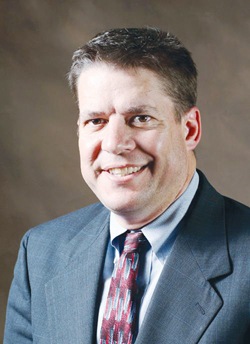Head for a Safe Harbor in 2013 (Opinion)
by October 1, 2012 12:00 am 94 views

If your company’s 401(k) plan doesn’t have a “safe harbor” feature in 2012, you should strongly consider incorporating such a feature for 2013 and beyond.
A safe harbor feature has three attractive advantages:
• It allows a 401(k) plan to automatically pass the annual nondiscrimination test, which can lower administrative costs;
• It ensures that highly compensated employees can maximize their pre-tax contributions to the plan; and
• It allows rank-and-file employees — as well as highly compensated employees — to receive employer contributions that are fully vested right away.
In addition, if an employer has historically made discretionary employer profit-sharing contributions to a 401(k) plan, the cost of implementing the safe harbor feature may often be nominal because the employer’s contribution can be divided into two components — employer profit-sharing contributions and employer safe harbor contributions — so that the total employer contribution costs remain the same.
Under a 401(k) plan, an employee can choose to have part of his compensation contributed to the plan on a pre-tax basis, meaning that the employee’s contributions to the plan aren’t subject to either federal or state income taxes.
Currently, an employee can make annual pre-tax deferral contributions to his 401(k) plan in 2012 of up to $17,000. Furthermore, age has its privileges because people 50 years or older are allowed to make an additional $5,500 in pre-tax “catch-up” contributions.
To encourage employees to participate in a 401(k) plan, an employer often will offer to match employee contributions based on a matching contribution formula.
Several features contribute to the popularity of 401(k) plans. Among these are the ability to save current federal and state income taxes on pre-tax contributions, receiving “free money” from one’s employer through the employer matching contributions, the ability to determine how money in a 401(k) plan is invested, and the ease with which a participant’s benefits in a 401(k) plan can be transferred from one plan to another as an employee changes jobs.
Despite these significant advantages, many rank-and-file employees still fail to participate in such a retirement plan. And their failure to prepare for retirement can interfere with the retirement planning of the highly compensated employees, called HCEs and defined as those who own at least 5 percent of the company or earn $115,000 or more in 2012.
That’s because each 401(k) plan must pass an annual “nondiscrimination” test. The test requires that the average of the “actual deferral percentage” for the high earners can’t exceed the average of the actual deferral percentage for the non-highly compensated employees (NHCEs) by more than a specified amount — generally two percentage points.
To keep the HCEs happy regardless of the saving habits of other employees, many employers include a safe harbor feature in their 401(k) plans. A safe harbor employer contribution within the 401(k) plan can take the form of:
• 3 percent of compensation made on behalf of all eligible employees, or
• A stair-stepped match made only on behalf of employees who make pre-tax contributions to the plan.
In the latter option, the employer contribution is a dollar-for-dollar match of an employee’s pre-tax contributions up to 3 percent of compensation and a 50-cent match for each dollar of employee pre-tax contributions between 3 percent and 5 percent of compensation, for a maximum employer matching contribution of 4 percent of compensation.
Employer safe harbor contributions are immediately fully vested, which should make both HCEs and NHCEs happy.
With year-end fast approaching for calendar year employers, now is the time to consider changing to a safe harbor 401(k) plan for 2013. Meeting with your employee benefits consultant can help you determine if a safe harbor 401(k) plan is right for your business. Remember, under the right circumstances, the safe harbor 401(k) plan is a win for the employer, highly compensated employees and, last but not least, non-highly compensated employees.
Dave M. Graf is an attorney with the Friday Eldredge & Clark firm in Little Rock. Email him at [email protected].
